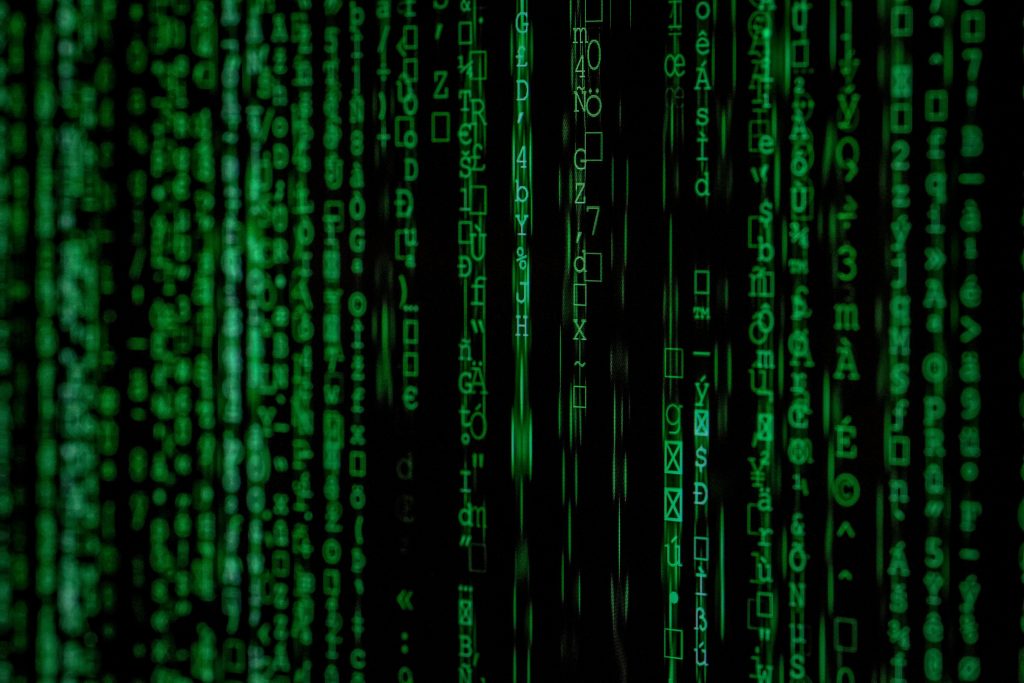A Comprehensive Guide to Troubleshooting PC Power Issues: What to Do When Your Computer Won’t Turn On
Introduction
Imagine this: you walk over to your desk, ready to dive into your new gaming setup, and you press the power button. The lights flicker for a second, and then—nothing. Your heart sinks; your computer is not turning on. This scenario is not uncommon and can be baffling, especially for those who may not have an extensive technical background. If you’ve ever experienced a computer that powers on briefly and then shuts down immediately, you are not alone. In this blog post, we’ll delve into the reasons your PC might not be turning on and provide a detailed method for troubleshooting the issue step by step.
Understanding Your Computer’s Boot Process
Before diving into troubleshooting steps, it’s crucial to understand the basics of how a computer starts. When power is supplied to your machine and you press the power button, the following occurs:
- Power Supply Activation: The power supply unit (PSU) sends power to internal components.
- POST (Power-On Self-Test): The motherboard initializes and checks for essential hardware (like RAM, CPU, and GPU).
- Booting: If POST is successful, your system will attempt to boot from the designated storage device, usually the hard drive or SSD.
If there’s a glitch at any point in this complex process, the computer may fail to turn on entirely or shut down shortly after starting.
Possible Causes of Power Issues
There are several reasons your computer might fail to remain powered on. Some of the most common include:
1. Power Supply Problems
One of the first components to check when your PC won’t turn on is the power supply. If the PSU is faulty or not providing sufficient power, it may prevent the system from booting properly. Use a multimeter or a PSU tester, if available, to check for correct voltage output.
2. Motherboard Malfunctions
Motherboard issues can manifest as problems recognizing components or conducting the POST process. Check for physical damage, swollen capacitors, or burn marks. A malfunctioning motherboard may also cause short circuits, leading to immediate shutdowns.
3. RAM Issues
Random Access Memory (RAM) is critical for system startup. If your RAM sticks are poorly seated or have gone bad, your computer may fail to initialize. In the Reddit post referenced, the user mentioned the RAM was removed and replaced, which could easily lead to this problem.
4. Graphics Card Problems
For systems with dedicated graphics cards, a malfunctioning GPU could prevent a successful boot. Ensure the graphics card is seated correctly in the PCIe slot and that any necessary power cables are connected.
5. Overheating
While overheating typically does not happen immediately, if your computer was previously running hot or if the thermal paste between the CPU and the cooler is dried up, it may reduce the computer’s ability to start effectively.
6. Peripheral Issues
Input devices, including keyboards, mice, or external USB devices, can occasionally cause boot problems. Disconnect all peripherals and attempt a reboot to see if that resolves the issue.
Troubleshooting Steps
Follow these structured steps when your PC fails to turn on:
Step 1: Basic Checks
- Power Source: Ensure the power cable is firmly connected to both the power outlet and PSU. If using a power strip, verify that it is powered on.
- Inspect Indicator Lights: Many PCs have indicator lights on the motherboard that can give clues about the power state. A flashing light could indicate an error.
- Listen for Beeps: If your motherboard has a speaker, it may emit beeping sounds. Refer to your motherboard manual for beep codes, which can diagnose issues.
Step 2: Remove All External Devices
Disconnect all peripherals (keyboard, mouse, printers, etc.) and just keep the monitor, power cable, and one set of RAM installed. Attempt to power on the PC to see if it successfully boots.
Step 3: Open the Case and Inspect Internals
Safety First: Guidelines for Handling Internal Components
- Ensure the computer is unplugged before any work starts.
-
Use an anti-static wrist strap to avoid damaging components due to static electricity.
-
Inspect Connections: Confirm that all cables (especially power connectors to the motherboard and CPU) are secure.
- Check RAM Modules: Remove and reseat the RAM sticks. Try booting with one stick of RAM at a time in different slots.
- Visual Damage: Look for blown capacitors, burnt components, or any signs of physical damage on the motherboard.
Step 4: Inspect Power Supply Unit
You may want to use a multimeter to check if the PSU is providing adequate voltage. If it’s failing, replacing it may be your best option.
Step 5: Test with Minimal Configuration
If all hardware seems operational, try booting the computer with the bare minimum hardware:
– CPU
– One stick of RAM
– Integrated graphics (remove the dedicated GPU if present)
Step 6: Perform a CMOS Reset
Clearing the CMOS can reset any BIOS settings that could be causing issues. This may involve removing the battery on the motherboard or using a jumper.
- Shut down the computer and unplug it.
- Find the battery (usually a silver coin-shaped battery) on the motherboard and remove it.
- Wait for about 5 minutes before replacing it.
- Plug the computer back in and boot.
Step 7: Consult Professionals or Consider Replacement
If none of the aforementioned steps work, you may need to consult a professional technician for further diagnosis. If your motherboard or power supply is indeed defective, replacement may be necessary.
Preventive Measures for the Future
Once you have fixed your computer, you can take several steps to avoid similar issues in the future:
– Regular Maintenance: Keep your computer clean and dust-free to help with dissipation of heat and prevent overheating.
– Adequate Cooling: Ensure your cooling system (fans, heatsinks) is operating well.
– Voltage Surge Protection: Use a surge protector to shield your electronics from voltage spikes.
– Monitor Temperatures: Use Software to keep track of your CPU and GPU temperatures to alert you to any potential overheating.
Conclusion
Having a PC that won’t remain powered on can be frustrating and daunting, particularly if you’re unsure where to start with troubleshooting. By following the structured steps outlined above, you can effectively identify and resolve many of the common issues that arise when a computer fails to boot.
Whether it’s checking your power supply, reseating components, or investigating thermal conditions within your computer, being thorough in your approach can save you both time and money. Should your troubleshooting efforts not yield results, don’t hesitate to reach out for professional help. Remember, electrical components are fragile, and sometimes, the best course of action is to consult an expert.
With patience and a systematic approach, you can often pinpoint the problem and restore your PC to fully operational status, allowing you to get back to your projects or gaming marathons!
Share this content:




This is an incredibly thorough guide to troubleshooting power issues with PCs! It’s a common frustration for many users, and it’s great to see such a structured approach laid out.
One additional tip that could be beneficial is to emphasize the importance of keeping a log of the troubleshooting process. Documenting what steps have been taken, along with any changes in behavior of the PC, can help immensely if professional assistance is needed later. This log can provide technicians with valuable insights into what might be wrong and can save both time and money.
Also, when inspecting the PSU, it’s worth noting that some symptoms of a failing power supply might not just be a complete failure to start; they can include random restarts or shutdowns, which can often be overlooked. It’s always a good practice to test the PSU under load if possible, as it can sometimes behave normally when disconnected but fail under actual operating conditions.
Lastly, I appreciate your mention of preventive measures. Regularly cleaning the dust from components and ensuring that there is good airflow in the case can make a significant difference in the longevity and performance of both power supplies and motherboards. Thanks for sharing such valuable insights!
Technical Support Response
Hi there,
I’m sorry to hear that you’re experiencing issues with your PC not turning on. Troubleshooting power-related issues can be frustrating, but I’m here to help you through the process. Below are some steps to take, based on the article you shared:
Follow These Steps
Response
It’s never a pleasant surprise when your PC suddenly refuses to power on, but considering the detailed troubleshooting steps outlined in your article, I would like to add a few more technical insights that might help pinpoint the issue even further.
Understanding Power Supply Testing
When checking the power supply, aside from using a multimeter, you might want to consider a PSU tester, which can make diagnosing potential faults much simpler. A faulty PSU can produce voltages that seem fine at rest but drop when load is applied, so it’s worth testing under load conditions if feasible.
Motherboard Examination
Since motherboard malfunctions are a common culprit, ensure you also inspect for any under-the-surface damage. Components like the voltage regulator modules (VRMs) can fail without any visible signs like bulging capacitors. If you have a multimeter, measure the voltage readings directly on the motherboard’s power input ports when trying to power on.
RAM Diagnostics
In addition to reseating the RAM, consider using a bootable USB with a memory diagnostic tool like MemTest86. This can help identify issues with your RAM that may not be evident simply through physical inspection.
Thermal Paste Check
For overheating concerns, ensure that not only is the thermal paste adequate, but also that your CPU